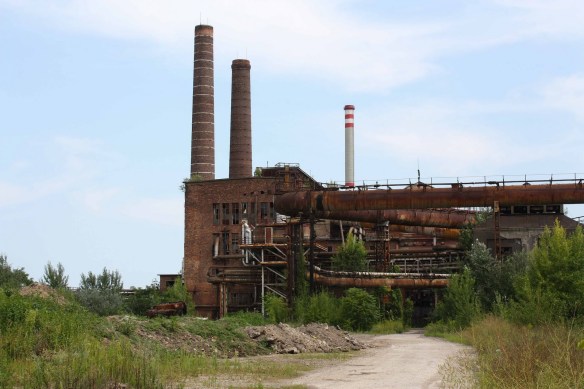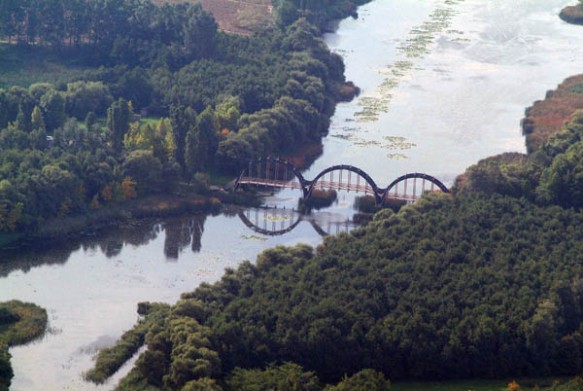Hungarians are well known for their incredible feats of innovation. Many of which have been accomplished by those who emigrated abroad. Whether they left the country for economic or political reasons, numerous expatriate Hungarians have been able to achieve abroad, what they were unable to do at home. Looking back through Hungarian history, it seems as though this traffic has flowed one way and that movement has been outward. During the 20th century such scientific luminaries as Leo Szilard, Edward Teller and John Van Neumann transformed the world with their innovative ideas. Sadly they were not able to do it, in the land which they were born. Over the last century and a half, Hungary has been a net exporter of brilliance. By contrast, the list of foreigners who made their mark on Hungary is relatively small, especially if one cancels out invaders and occupiers. Yet ideas immigrate just like people do. Ideas transcend borders, as well as space and time. They are fluid, dynamic and expansive. The influence of an idea can alter the people and even the land. In the latter case it can also preserve it.
The National Park Idea & Hungary
Speaking of the land, one idea that has vastly influenced the protection of landscapes was a relative late comer to Hungary. Nevertheless, this idea has left its mark on some of the most beautiful areas in the Carpathian Basin. This is the National Park idea. As so often recited in popular lore, the national park idea is a uniquely American concept. It began with Yellowstone National Park, in what is today northwestern Wyoming, designated as the first national park in the world. This occurred in 1872. Since that time national parks have been declared all across the globe.
Some say that national parks are the ultimate example of democracy, setting aside land for the public good. These protected areas are held in ownership by all of a nation’s citizenry to provide for the enjoyment of everyone, rich and poor, the famous and forgotten. This is diametrically opposite an idea that dominated central Europe for centuries on end. This was a concept of great landed estates owned by aristocrats and royalty. In Hungary, an elite group of landholders kept an iron grip on land ownership right up into the 20th century. According to historian Paul Lendvai in 1930 “2,400 great magnates owned more than 36 percent of the land; by contrast, 72.7 percent of the peasantry owned only 10 per cent of it.” Furthermore, nearly half of the 4.5 million peasants owned no land at all. This state of affairs crumbled in an abrupt and radical manner as the communists took control of Hungary following World War II. The state became the primary land holder. Now the communists would decide patterns of land use, dispersion and protection.
Totalitarianism With A Democratic Twist
Strangely enough the national park idea in Hungary first arose under a dictatorial regime. Despite an ideological bent towards totalitarianism, a communist government was the first to set aside land in Hungary for protection as a national park. The irony of this goes without saying. A chiefly democratic idea (national parks) was imported from the foremost democratic society in the world (the United States) for use by a Communist regime. Adding to this bizarre paradox was the fact that it was done by the same communists who emphasized heavy industry. This policy had severe consequences for the degradation of Eastern Europe’s environment. If anyone believes the Hungarian communists were lovers of nature and protectors of the environment they might want to visit the abandoned factories of Miskolc to understand the true nature of their policies.
The communist land use policy was implemented in the most radical way possible, putting all land under public or it should be said, state control. Economically, industrially and agriculturally this was terribly inefficient, eventually turning into a disaster. Yet there are a few exceptions to every rule. In this case, the protection of amazing natural landscapes as national parks did begin and even expand during the communist era. This is quite counterintuitive, but makes it no less true. In 1952, at the height of the Stalinist era in Hungary, the nation’s first national park was designated. It protected the Tihany peninsula, on the northern side of Lake Balaton.
Destruction, Restoration & Protection – Communism & Kis-Balaton
Yet it was the same forces which offered a degree of protection to many of Hungary’s most significant natural areas that nearly destroyed them as well. Following the end of communism, this led to efforts for their restoration and protection. A good example of this also involves the Balaton area at Balaton Uplands National Park. The park was designated in 1997 from six protected areas north of Lake Balaton that encompass volcanic hills, rare flora, fauna and wetlands.
One area of the park in particular, Kis-Balaton (Little Balaton) first suffered and then benefited from Communist policies. Located on the far southwestern edge of the lake, Kis-Balaton is connected to Lake Balaton by the Zala River. At one time it was the bay of the larger lake, covering 40 square kilometers. The lake lost over half its water due to accelerated draining for irrigation purposes during the 1950’s in order to aid communist agricultural policy. To make matters much worse, pollutants dumped into the Zala River further contaminated the lake and nearly destroyed it in the process. Something had to be done. Though communist policy had caused almost all of the damage, restoration was begun while the party was still in power.
The Best Idea – Saving Kis-Balaton, Saving Hungary
In 1979 the area was placed under the International Ramsar Convention for the protection and sustainable use of wetlands. This led to the protected wetlands that exist there today. Vast reed beds are a life force purifying water that eventually flows into Lake Balaton. The sights and sounds of numerous bird species are readily apparent. Thousands upon thousands of herons, egrets and geese stop here on their annual migrations. The resurrection of this globally significant ecological environment is a striking example of what conservation can achieve in the span of a single generation. The National Park idea has been used here to achieve a level of protection that can mitigate the worst excesses of the Communist ideology. It is enough to make one believe that the delicate balance of nature can be restored. It is also enough to make one believe that democratic ideas like the National Parks cannot only save the environment, but also Hungary.



